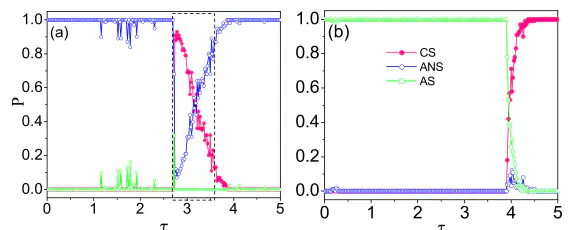Time delay induced different synchronization patterns in repulsively coupled chaotic oscillators

Abstract
Time delayed coupling plays a crucial role in determining the system’s dynamics. We here report that the time delay induces transition from the asynchronous state to the complete synchronization (CS) state in the repulsively coupled chaotic oscillators. In particular, by changing the coupling strength or time delay, various types of synchronous patterns, including CS, antiphase CS, antiphase synchronization (ANS), and phase synchronization, can be generated. In the transition regions between different synchronous patterns, bistable synchronous oscillators can be observed. Furthermore, we show that the time-delay-induced phase flip bifurcation is of key importance for the emergence of CS. All these findings may light on our understanding of neuronal synchronization and information processing in the brain.